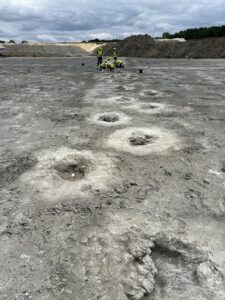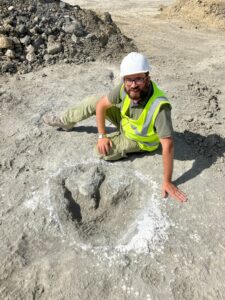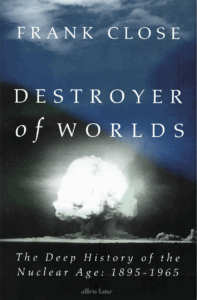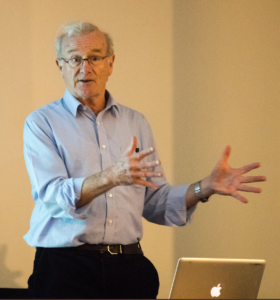Tuesday 16th September 2025 from 19:00 for 19:30
Abingdon United Football Club (Northcourt Rd, OX14 1PL, Abingdon)
 In a stunning find, researchers from the Universities of Oxford and Birmingham uncovered a huge expanse of quarry floor filled with hundreds of different dinosaur footprints, creating multiple enormous trackways. Dating back to the Middle Jurassic Period (around 166 million years ago), the trackways form part of a huge ‘dinosaur highway’ and include footprints from the 9 metre ferocious predator Megalosaurus, and herbivorous dinosaurs up to twice that size.
In a stunning find, researchers from the Universities of Oxford and Birmingham uncovered a huge expanse of quarry floor filled with hundreds of different dinosaur footprints, creating multiple enormous trackways. Dating back to the Middle Jurassic Period (around 166 million years ago), the trackways form part of a huge ‘dinosaur highway’ and include footprints from the 9 metre ferocious predator Megalosaurus, and herbivorous dinosaurs up to twice that size.
Speaker: Dr. Duncan Murdock
 Dr Murdock is a Collections Manager in Earth Collections at the Oxford University Museum of Natural History. He is responsible for the day-to-day management of the Museum’s mineralogy and petrology collections, and parts of the invertebrate palaeontology collections. He also have a significant role in developing new exhibitions and displays from temporary exhibitions.
Dr Murdock is a Collections Manager in Earth Collections at the Oxford University Museum of Natural History. He is responsible for the day-to-day management of the Museum’s mineralogy and petrology collections, and parts of the invertebrate palaeontology collections. He also have a significant role in developing new exhibitions and displays from temporary exhibitions.






